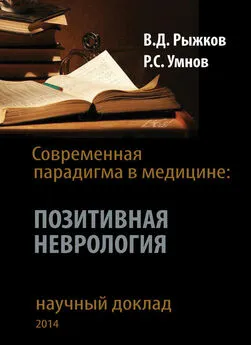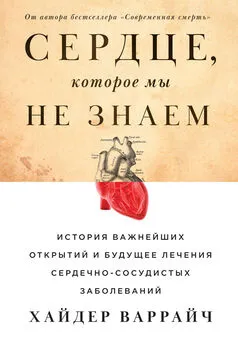Хайдер Варрайч - Современная смерть. Как медицина изменила уход из жизни
- Название:Современная смерть. Как медицина изменила уход из жизни
- Автор:
- Жанр:
- Издательство:Альпина нон-фикшн
- Год:2021
- Город:Москва
- ISBN:978-5-0013-9427-3
- Рейтинг:
- Избранное:Добавить в избранное
-
Отзывы:
-
Ваша оценка:
Хайдер Варрайч - Современная смерть. Как медицина изменила уход из жизни краткое содержание
По сравнению с серединой XX столетия радикально изменились все аспекты окончания нашей жизни — от чего мы умираем, когда умираем, где умираем и как умираем. В результате прогресса медицинской науки и медицинских технологий даже само определение смерти теперь формулируется иначе — что уж говорить о ее экологии, эпидемиологии, экономике и этике. Американская медицина прошла за это время огромный путь освоения новых подходов к смерти и умирающим — путь, на который в некоторых отношениях еще только предстоит вступить России. В своей дебютной книге доктор Варрайч рассказывает о сегодняшних ритуалах смерти и о ее современном языке — и на основе своего опыта лечащего врача в отделении интенсивной терапии крупной американской больницы задумывается о том, что лучше получалось у наших предков и в чем мы явно превзошли их.
Современная смерть. Как медицина изменила уход из жизни - читать онлайн бесплатно ознакомительный отрывок
Интервал:
Закладка:
In re Martin. 538 NW2d 399; Mich. 1995.
426
Emanuel LL, Barry MJ, Stoeckle JD, Ettelson LM, Emanuel EJ. Advance directives for medical care — a case for greater use. N Engl J Med . 1991; 324 (13): 889-95.
427
Holley JL, Stackiewicz L, Dacko C, Rault R. Factors influencing dialysis patients’ completion of advance directives. Am J Kidney Dis . 1997; 30 (3): 356-60.
428
Morrison RS, Olson E, Mertz KR, Meier DE. The inaccessibility of advance directives on transfer from ambulatory to acute care settings. JAMA . 1995; 274 (6): 478-82.
429
Morrison et al., The inaccessibility of advance directives.
430
Omer ZB, Hwang ES, Esserman LJ, Howe R, Ozanne EM. Impact of ductal carcinoma in situ terminology on patient treatment preferences. JAMA. Intern Med . 2013; 173 (19): 1830-31.
431
Ott BB. Advance directives: the emerging body of research. Am J Crit Care . 1999; 8 (1): 514-19.
432
Danis M, Garrett J, Harris R, Patrick DL. Stability of choices about life-sustaining treatments. Ann Intern Med . 1994; 120 (7): 567-73.
433
New York Bar Association. New York Living Will. www.nysba.org/WorkArea/DownloadAsset.aspx?id=26506. 2014.
434
Brett AS. Limitations of listing specific medical interventions in advance directives. JAMA . 1991; 266 (6): 825-28.
435
NPR. Episode 521: The Town That Loves Death. Planet Money. www.npr.org/blogs/money/2014/02/28/283444163/episode-521-the-town-that-loves-death. 2014.
436
Hammes BJ, Rooney BL. Death and end-of-life planning in one midwestern community. Arch Intern Med . 1998; 158 (4): 383-90.
437
United States Census Bureau. QuicksFacts: La Crosse County, Wisconsin. quickfacts.census.gov/qfd/states/55/55063.html. 2014.
438
Puchalski CM, Zhong Z, Jacobs MM, Fox E, Lynn J, Harrold J, et al. Patients who want their family and physician to make resuscitation decisions for them: observations from SUPPORT and HELP. Study to Understand Prognoses and Preferences for Outcomes and Risks of Treatment. Hospitalized Elderly Longitudinal Project. J Am Geriatr Soc . 2000; 48 (5 suppl): S84-90.
439
Kumar A, Aronow WS, Alexa M, Gothwal R, Jesmajian S, Bhushan B, et al. Prevalence of use of advance directives, health care proxy, legal guardian, and living will in 512 patients hospitalized in a cardiac care unit/intensive care unit in 2 community hospitals. Arch Med Sci . 2010; 6 (2): 188-91.
440
Kirkpatrick JN, Guger CJ, Arnsdorf MF, Fedson SE. Advance directives in the cardiac care unit. Am Heart J . 2007; 154 (3): 477-81.
441
Escher M, Perrier A, Rudaz S, Dayer P, Perneger TV. Doctors’ decisions when faced with contradictory patient advance directives and health care proxy opinion: a randomized vignette-based study. J Pain Symptom Manage . 2014.
442
Escher et al., Doctors’ decisions.
443
Diekema DS. Revisiting the best interest standard: uses and misuses. J Clin Ethics . 2011; 22 (2): 128-33.
444
Himmelstein DU, Thorne D, Warren E, Woolhandler S. Medical bankruptcy in the United States, 2007: results of a national study. Am J Med . 2009; 122 (8): 741-46.
445
Senelick R. Get your doctor to stop using medical jargon. Huffington Post. www.huffingtonpost.com/richard-c-senelick-md/medical-jargon_b_1450797.html. 2012.
446
Fagerlin A, Schneider CE. Enough. The failure of the living will. Hastings Cent Rep . 2004; 34 (2): 30–42.
447
Brickman P, Coates D, Janoff-Bulman R. Lottery winners and accident victims: is happiness relative? J Pers Soc Psychol . 1978; 36 (8): 917-27.
448
Silver RL. Coping with an Undesirable Life Event: A Study of Early Reactions to Physical Disability [dissertation]. Northwestern University; 1982.
449
Schkade DA, Kahneman, D. Does living in California make people happy? A focusing illusion in judgments of life satisfaction. Psychological Science . 1998; 9 (5): 340-46.
450
Shalowitz DI, Garrett-Mayer E, Wendler D. The accuracy of surrogate decision makers: a systematic review. Arch Intern Med . 2006; 166 (5): 493-97.
451
Danis et al., Stability of choices [см. «Когда бремя несут опекуны», прим. 41].
452
Suhl J, Simons P, Reedy T, Garrick T. Myth of substituted judgment. Surrogate decision making regarding life support is unreliable. Arch Intern Med . 1994; 154 (1): 90–96.
453
Coppola KM, Ditto PH, Danks JH, Smucker WD. Accuracy of primary care and hospital-based physicians’ predictions of elderly outpatients’ treatment preferences with and without advance directives. Arch Intern Med . 2001; 161 (3): 431-40.
454
Vig EK, Starks H, Taylor JS, Hopley EK, Fryer-Edwards K. Surviving surrogate decision-making: what helps and hampers the experience of making medical decisions for others. J Gen Intern Med . 2007; 22 (9): 1274-79.
455
Watson A, Sheridan B, Rodriguez M, Seifi A. Biologically-related or emotionally-connected: who would be the better surrogate decision-maker? Med Health Care Philos . 2014.
456
Emanuel EJ. Living wills: are durable powers of attorney better? Hastings Cent Rep . 2004; 34 (6): 5–6; author reply 7.
457
Wastila LJ, Farber NJ. Residents’ perceptions about surrogate decision makers’ financial conflicts of interest in ventilator withdrawal. J Palliat Med . 2014; 17 (5): 533-39.
458
Rodriguez RM, Navarrete E, Schwaber J, McKleroy W, Clouse A, Kerrigan SF, et al. A prospective study of primary surrogate decision makers’ knowledge of intensive care, Crit Care Med . 2008; 36 (5): 1633-6; Azoulay E, Chevret S, Leleu G, Pochard F, Barboteu M, Adrie C, et al. Half the families of intensive care unit patients experience inadequate communication with physicians. Crit Care Med . 2000; 28 (8): 3044-49.
459
Quinn JR, Schmitt M, Baggs JG, Norton SA, Dombeck MT, Sellers CR. Family members’ informal roles in end-of-life decision making in adult intensive care units. Am J Crit Care . 2012; 21 (1): 43–51.
460
Hawkins NA, Ditto PH, Danks JH, Smucker WD. Micromanaging death: process preferences, values, and goals in end-of-life medical decision making. Gerontologist . 2005; 45 (1): 107-17.
461
Puchalski et al., Patients who want [см. «Когда бремя несут опекуны», прим. 47].
462
Long AC, Curtis JR. The epidemic of physician-family conflict in the ICU and what we should do about it. Crit Care Med . 2014; 42 (2): 461-62.
463
Beam C. Under the knife. New Yorker . August 25, 2014.
464
Warraich H. Pakistan: the final frontier for a polio-free world. Lancet . 2011; 377 (9761): 207-8; Warraich HJ. Religious opposition to polio vaccination. Emerg Infect Dis . 2009; 15 (6): 978.
465
Studdert DM, Mello MM, Burns JP, Puopolo AL, Galper BZ, Truog RD, et al. Conflict in the care of patients with prolonged stay in the ICU: types, sources, and predictors. Intensive Care Med . 2003; 29 (9): 1489-97.
466
Schuster RA, Hong SY, Arnold RM, White DB. Investigating conflict in ICUs— is the clinicians’ perspective enough? Crit Care Med . 2014; 42 (2): 328-35.
467
Breen CM, Abernethy AP, Abbott KH, Tulsky JA. Conflict associated with decisions to limit life-sustaining treatment in intensive care units. J Gen Intern Med . 2001; 16 (5): 283-89.
468
Studdert et al., Conflict.
469
Silveira MJ, Kim SY, Langa KM. Advance directives and outcomes of surrogate decision making before death. N Engl J Med . 2010; 362 (13): 1211-18.
470
Majesko A, Hong SY, Weissfeld L, White DB. Identifying family members who may struggle in the role of surrogate decision maker. Crit Care Med . 2012; 40 (8): 2281-86.
471
Marks MA, Arkes HR. Patient and surrogate disagreement in end-of-life decisions: can surrogates accurately predict patients’ preferences? Med Decis Making . 2008; 28 (4): 524-31.
472
Schenker Y, Crowley-Matoka M, Dohan D, Tiver GA, Arnold RM, White DB. I don’t want to be the one saying «we should just let him die»: intrapersonal tensions experienced by surrogate decision makers in the ICU. J Gen Intern Med . 2012; 27 (12): 1657-65.
473
Parks SM, Winter L, Santana AJ, Parker B, Diamond JJ, Rose M, et al. Family factors in end-of-life decision-making: family conflict and proxy relationship. J Palliat Med . 2011; 14 (2): 179-84.
474
Studdert et al., Conflict.
475
Breen et al., Conflict.
476
Salam R. How La Crosse, Wisconsin slashed end-of-life medical expenditures. National Review . www.nationalreview.com/agenda/372501/how-la-crosse-wisconsin-slashed-end-life-medical-expenditures-reihan-salam. 2014.
477
Fritsch J, Petronio S, Helft PR, Torke AM. Making decisions for hospitalized older adults: ethical factors considered by family surrogates. J Clin Ethics . 2013; 24 (2): 125-34.
478
Knickle K, McNaughton N, Downar J. Beyond winning: mediation, conflict resolution, and non-rational sources of conflict in the ICU. Crit Care . 2012; 16 (3): 308.
479
Kramer BJ, Kavanaugh M, Trentham-Dietz A, Walsh M, Yonker JA. Predictors of family conflict at the end of life: the experience of spouses and adult children of persons with lung cancer. Gerontologist . 2010; 50 (2): 215-25.
480
Sherer RA. Who will care for elder orphans. Geriatric Times . 2004; 5 (1). Available at www.cmellc.com/geriatrictimes/g040203.html.
481
McPherson M, Lynn, S., Brashears, M. Social isolation in America: changes in core discussion networks over two decades. ASR . 2006; 71 (3): 353-75.
482
Sessums LL, Zembrzuska H, Jackson JL. Does this patient have medical decision-making capacity? JAMA . 2011; 306 (4): 420-27.
483
Holt-Lunstad J, Smith TB, Layton JB. Social relationships and mortality risk: a meta-analytic review. PLoS Med . 2010; 7 (7): e1000316.
Читать дальшеИнтервал:
Закладка:










